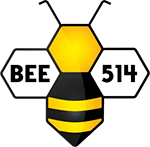
1 NUC :
- small bees colony with Queen
- 2 Food Frames
- 2 Frames for brood
1 Nuc – $ 200 CAD
Nucs, or nucleus colonies, are small honey bee colonies created from larger colonies. The term refers both to the smaller size box and the colony of honeybees within it. The name is derived from the fact that a nuc hive is centered on a queen, the nucleus of the honey bee colony.
Please, call us at the end of May.
When picking up your nuc you must have: a smoker, a bee suit, an adhesive tape
Note: some bees could escape from the box, it is important to not be accompanied by children or allergic persons. As soon as the Nuc is in your transport vehicle you become fully responsible for it and its honeybees.
